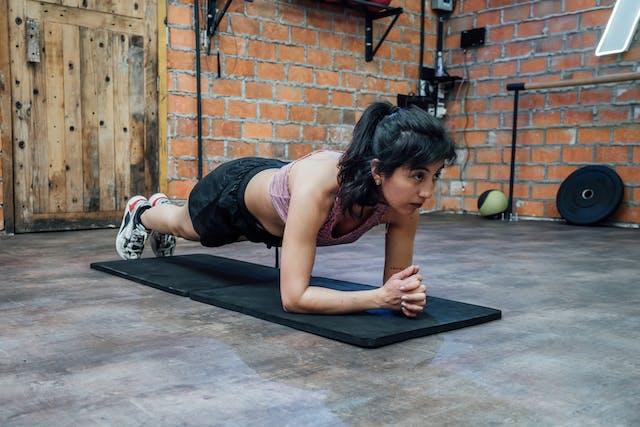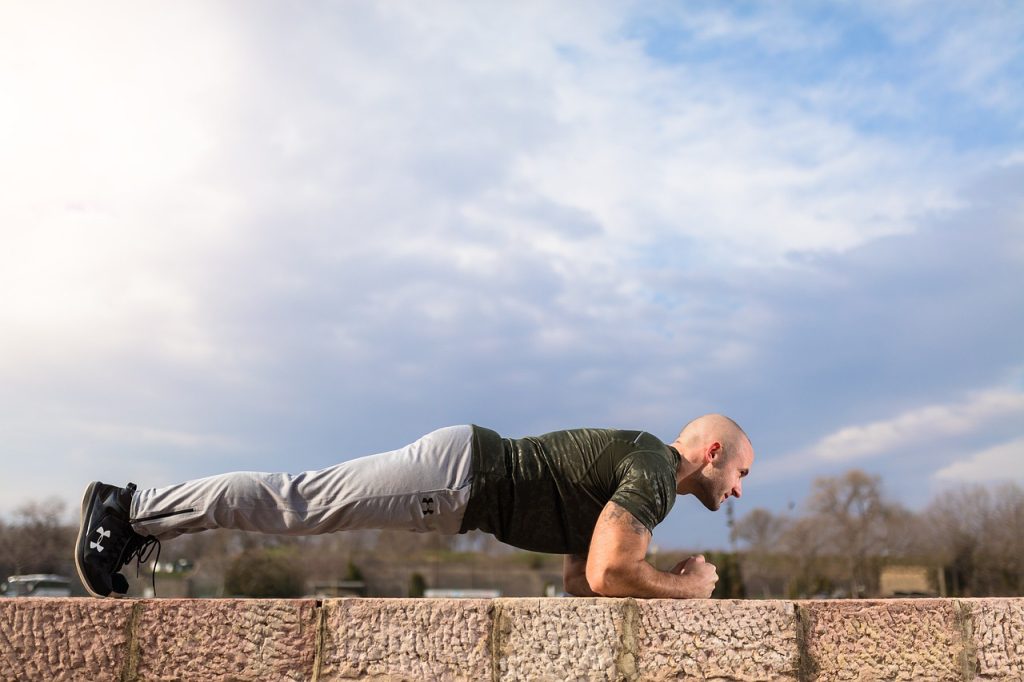The core’s functions include resisting rotational stress in addition to contracting or bending repeatedly, twisting, and rotating. Whether lifting big objects, carrying a hefty load, or transmitting power from our hips while throwing a punch or a ball, we need strong cores to maintain a stable torso while working hard. It is just as necessary to have that strong, stable core that can withstand outside forces trying to twist, bend, or spin as it is to be able to execute a million situps.
Step inside the plank. The name of the exercise says it all: you\’re using your entire body to construct an unyielding, stiff plank. You have to be firm, not floppy, from your toes to your head.
The Right Plank Form
Although planks aren’t all that difficult, there are a few things to remember even if they appear like the most straightforward workout ever.
Put yourself in the pushup posture, but instead of using your hands, place your forearms on the ground. Direct alignment of your elbows beneath your shoulders is ideal. on your toes.
Tighten your abs and squeeze your glutes. Pinch a quarter between your butt cheeks, if you would.
To maintain a neutral neck and spine, look at the ground. Your chin might appear slightly tucked in.
Adjust your pelvis. To properly work your abs, execute a small pelvic tuck instead of arching your back. You can also engage your quads and drive your feet against the ground by tucking your pelvis.
Apply pressure to the earth. Shoulder blades ought to extend.
Draw a firm, straight line from your head to your toes. a single, well-assembled item. Stated differently, a plank.
Retain that role.
Which Muscles Are Used by Planks?

The plank requires full body activation. Every molecule in your body is working against gravity when you’re in the plank posture. To prevent collapse and preserve coherence over the whole length of the line your body produces, you must contract and engage every muscle fibre in your body. You are essentially holding the line against the most pervasive force in the known world when performing a plank.
Your abs are doing their part to prevent your spine from buckling.
In order to maintain your lower back, your glutes are contracting.
In order to maintain a cohesive and neutral spine, your erector spinae muscles are used.
In order to stabilise your legs, your quads are contracting.
In order to keep your hips from fracturing, your hip flexors are engaged.
Your shoulders are being stabilised by your serratus anterior.
And so forth, endlessly. You’re putting your spine in the worst possible posture, leaving it open to the force of gravity at every angle. During a plank, everything is being worked out.
Plank Advantages
Planks, according to research, increase strength, especially in the trunk muscles. They may even cause your abdominal muscles to thicken. For those who lack much training, simply performing planks for a few weeks will improve their general level of fitness. That is, overall fitness rather than just trunk strength.1.
Research indicates that using planks in an athlete’s training regimen can lower injury rates by increasing their body’s resistance to damage. It turns out that you are more resilient to all the different pressures operating on you when engaging in sports activity if you have strong, steady trunk muscles.2.
Put simply, planking is exercise, and activity raises practically all indicators of health. The problem with planks is that they seem like a simple, low-impact workout that most people would never even think to attempt. A plank can appear to be doing nothing at all to the inexperienced.
Variations in Planks
There are additional variations you might try if you grow tired of the conventional plank.
Extended Lever Plank
To prolong the lever and make the exercise more challenging, position your elbows a few inches ahead of your shoulders rather than precisely beneath them. Studies indicate that this leads to a greater activation of certain trunk muscles.3. It gets harder the farther your elbows stray ahead of your shoulders.
Side Board
Perform the plank on your side, keeping yourself steady with one hand on the floor and one foot edge pressed firmly into the earth. Change positions.
Opposite Plank
Place yourself in the classic plank posture, using simply your left elbow and right foot or your right elbow and left foot to sustain yourself.
Things to Bear in Mind

Keep your hips from sagging to the floor. Although the exercise is first made easier by sagging hips, it is not a plank and loses its intended purpose.
Keep your eyes down! Gaze at the earth below. This is a useful cue to keep your neck in a neutral position.
Stay away from failure. Cut the power when your form starts to suffer. Only when you perform the plank with correct form will you reap its benefits.
Avoid hunching your back too much. Hold your pelvis in place.
When done correctly, the basic plank is enough to create adequate core stability, strength, and overall resilience—even if you never graduate (or choose to proceed) to the other plank variations.

